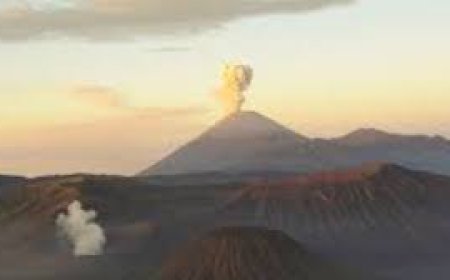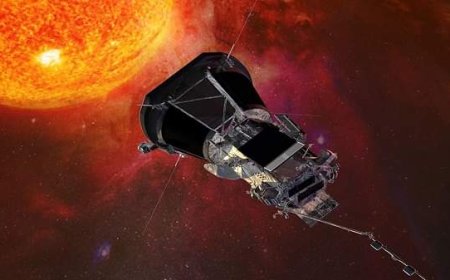NASA Says Boeing Starliner Astronauts May Fly Home on SpaceX in 2025
The agency had insisted for a couple of months that it was confident that Suni Williams and Butch Wilmore would return on Starliner.NASA has downplayed problems experienced by Starliner, a Boeing spacecraft that took two astronauts to the International Space Station in June. But on Wednesday, NASA officials admitted that the issues might be more serious than first thought and that the astronauts might not return on the Boeing vehicle, after all. The agency is exploring a backup option for the astronauts, Suni Williams and Butch Wilmore, to instead hitch a ride back to Earth on a spacecraft built by Boeing’s competitor SpaceX. The astronauts’ stay in orbit, which was to be as short as eight days, could be extended into next year.

“We could take either path,” Ken Bowersox, NASA’s associate administrator for the space operations mission directorate, said during a news conference on Wednesday. “And reasonable people could pick either path.”
The announcement adds more headaches and embarrassment for Boeing, an aerospace giant that has billions of dollars of aerospace contracts with the federal government and builds commercial jets that fly all around the world.
In addition to the woes faced by the company’s civil aviation division after part of a 737 jet’s fuselage blew off during flight in January, Boeing announced on Aug. 1 that it was writing off $125 million of unplanned costs spent on the Starliner program, adding to $1.5 billion of earlier write-offs.
NASA and Boeing officials had maintained that the crew members who launched with Starliner on its first crewed test flight were not stranded in space. Ms. Williams and Mr. Wilmore have spent two months aboard the orbital outpost while engineers continue to analyze data about the faulty performance of several of the Starliner’s thrusters when it approached for docking, as well as several helium leaks.
Under the contingency plan, the next SpaceX Crew Dragon capsule would travel to the space station with only two astronauts instead of four. Ms. Williams and Mr. Wilmore would then join as full-fledged members of the space station crew for a half-year stay and return on the Crew Dragon around next February.
“In the last few weeks, we have decided to make sure we have that capability there, as our community, I would say, got more and more uncomfortable,” said Steve Stich, the manager of the commercial crew program at NASA.
Mr. Stich said that no decision had been made but that one would have to be made by the middle of this month.
That Crew Dragon launch has been pushed back to no earlier than Sept. 24 to allow more time for NASA officials to contemplate what to do with Starliner. The launch had been scheduled for Aug. 18.
On Wednesday, a Boeing spokesman said in a statement: “We still believe in Starliner’s capability and its flight rationale. If NASA decides to change the mission, we will take the actions necessary to configure Starliner for an uncrewed return.”
During earlier news conferences, Mr. Stich and Mark Nappi, who runs the Starliner program at Boeing, portrayed the delays as prudent engineering measures.
Mr. Stich also downplayed the possibility that the astronauts would not return on Starliner. On July 10, in response to a question about whether NASA was looking at using Crew Dragon as a backup, Mr. Stich said, “Certainly we’ve dusted off a few of those things to look at relative to Starliner, just to be prepared.”
But he added that Starliner remained the “prime option.”
In the background, NASA had already started working on the backup plan. “We started in early July, doing some early planning with SpaceX for some of these contingencies,” Mr. Stich said on Wednesday. “Then as we got closer and a little bit more data, we started to put a few more things in place.”
A turning point was the ground testing of a similar thruster at NASA’s test facility in White Sands, N.M.
That includes identifying Crew Dragon spacesuits that would fit Ms. Williams and Mr. Wilmore and making preparations so that the Crew Dragon could launch with fewer passengers. (The empty seats would carry ballast to replace the weight of the astronauts.)
Mr. Stich declined to say which two astronauts currently slated to fly on that mission, known as Crew-9, would lose their ride to orbit.
If NASA decides to go with the backup plan, Starliner would still return to Earth in early September, but without anyone aboard. That would free up a docking port on the space station for the astronauts on the next Crew Dragon. Then a Crew Dragon currently docked at the space station would return with four astronauts ending their stay at the space station.
With the delay of the next mission to the space station, the next people headed to orbit could be four private astronauts led by the entrepreneur Jared Isaacman, no earlier than Aug. 26. Their mission, named Polaris Dawn, is to take Mr. Isaacman and a crew to an orbit that stretches 870 miles above the surface, the farthest anyone has been from Earth since NASA’s Apollo moon missions more than five decades ago. Two members of the crew may also attempt the first commercial spacewalk.
Starliner is not the only spacecraft to experience problems en route to the space station this summer. Cygnus, a Northrop Grumman cargo spacecraft, launched on Sunday. But an engine burn to push it on a trajectory to meet up with the space station was canceled because of low pressure in the propulsion system. After analyzing the readings, Northrop Grumman engineers concluded the pressure was adequate and rescheduled the engine burns. Cygnus arrived at the space station early Tuesday at the originally scheduled time.
Source :- the advance science, science daily, the new York times
Writer:- Tasfia khan


















































